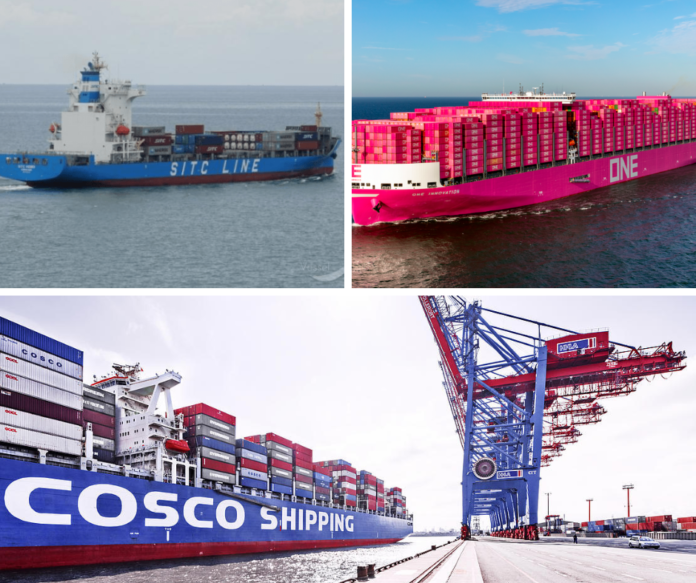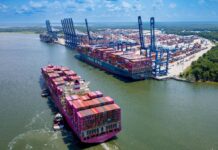
Top Asian container companies drive world trade
Asia dominates the global container shipping industry, with several regional giants controlling a significant share of worldwide capacity. These companies not only move goods across oceans but also invest heavily in modern fleets and future capacity.
In terms of TEU capacity, and based on the latest data from Alphaliner, here’s a closer look at the top Asian container companies and their position in the market.
Capacity Leaders in 2025
COSCO Shipping Lines
COSCO Shipping Lines stands as the largest container carrier in Asia and one of the biggest in the world. The company controls an impressive 3,447,635 TEU, representing 10.6% of the global share. Operating a fleet of 534 ships.
COSCO continues to expand, with 71 vessels currently on order. This scale allows the company to offer extensive global coverage and competitive service, solidifying its leadership role in international shipping.
Ocean Network Express (ONE)
Ocean Network Express, better known as ONE, ranks as the second-largest Asian carrier. The company operates 2,102,829 TEU, holding 6.4% of the market share. Its fleet includes 274 ships, with 48 more under construction or on order.
Known for its distinctive magenta-colored vessels, ONE combines resources from Japan’s major shipping lines, giving it both heritage and modern efficiency.
Evergreen Marine Corporation
Taiwan-based Evergreen Marine manages 1,874,734 TEU, which accounts for 5.7% of global capacity. The company runs 232 ships and has another 48 vessels on order, a sign of strong confidence in future trade growth.
Evergreen’s green-painted fleet is a familiar sight in ports worldwide, and its commitment to fleet expansion ensures it remains among the top Asian container companies for years to come.
HMM
South Korea’s HMM holds a 2.9% share of the global market with 941,019 TEU. The company operates 86 ships and has 7 more on order. HMM plays a crucial role in connecting Korean exports to global markets, and its investment in new capacity reflects both ambition and resilience in a competitive industry.
Yang Ming Marine Transport Corporation
Yang Ming, another Taiwanese carrier, controls 726,031 TEU, giving it 2.2% of the global share. The company’s 101 ships are set to be joined by 18 newbuilds, a significant step in strengthening its regional and global presence. Yang Ming continues to focus on operational efficiency and strategic growth.
Wan Hai Lines
Wan Hai Lines specializes in regional trade within Asia but also extends to international routes. It has 550,947 TEU, representing 1.7% of market share, with a fleet of 114 ships and 32 more on order. The company’s focus on both regional connectivity and modern vessels ensures its competitiveness.
Pacific International Lines (PIL)
Singapore-based PIL operates 432,070 TEU, capturing 1.3% of the global market. With 98 ships in service and 20 more on order, PIL is steadily growing its fleet while maintaining strong regional coverage in Southeast Asia and beyond.
SITC, X-Press Feeders, and IRISL Group
While smaller in scale, several other carriers make up an important part of Asia’s shipping network. SITC runs 189,481 TEU with 122 ships and 14 on order, focusing on intra-Asia routes. X-Press Feeders operates 186,702 TEU with 103 ships and 10 on order, specializing in feeder services that connect smaller ports to major hubs.
The IRISL Group, based in Iran, manages 144,470 TEU across 32 ships, without any vessels currently on order. Together, these companies keep essential regional and niche routes active, supporting the flow of trade across Asia’s diverse economies.
From capacity to innovation, Asia will stay at the helm
The top Asian container companies shape the future of global shipping, both through their market share and their commitment to fleet modernization. From mega-carriers like COSCO to specialized operators such as SITC and X-Press Feeders, Asia’s shipping industry continues to expand and adapt, reinforcing its dominant role in world trade.





